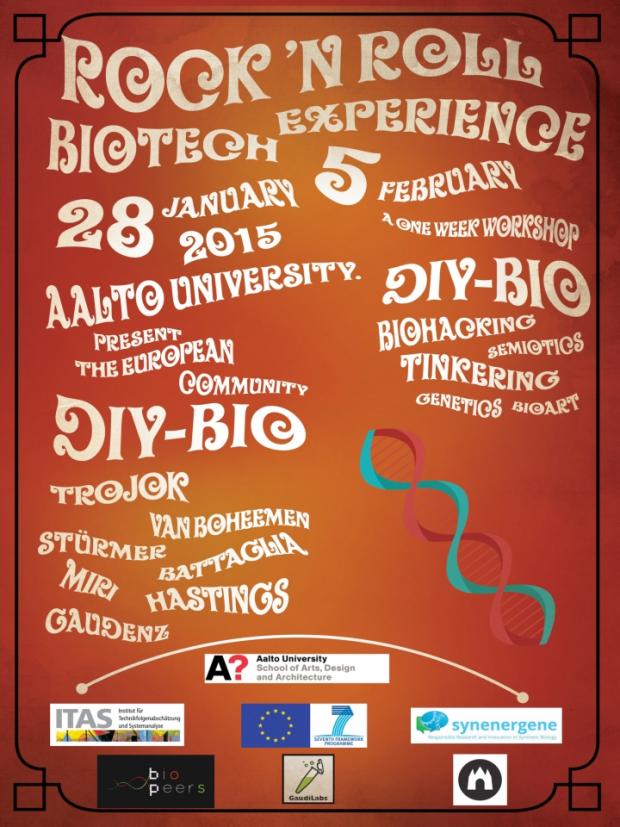
Rock'n Roll Bio, Biofilia Laboratory 2015, Helsinki
Submitted by Ruediger Trojok on
In January 2015 a team of 7 biohackers from 7 different countries united to give an amazing course to art and design students at Aalto University, Helsinki. In 7 days, the students learnt the fundamentals of molecular life-sciences, from molecular cell biology to synthetic biology. Yes, we tought them to do everything: growing E. coli cells, extracting DNA, amplifying genes with the PCR method, assembling a novel plasmid vector and subsequently transform it back into E. Coli. The created cells were able to grow on a simple LB broth plate and turn the chemical XGAL into a blue dye.
Helsinki Biohacking 2015 on Vimeo.
On top, the biohacker and glowing plant genome architect Andreas Stürmer showed off his protocols to generate a fluorescent plant. He inserted a gene for the Green Fluorescent Protein into a tobacco plant with the help of Agrobacterium Tumefaciens. The results were a nice and shiny genetically reprogrammed plant (which we had to leave behind in the laboratory due to regulations).
In the E. coli experiment, all used genetic elements are naturally occurring in E. coli species and were merely be rearranged using synthetic biology technology. No new genes are introduced to the species. The modifications are thus called cis-genetic and are free to use outside of the laboratory in some european countries (e.g. Germany), but not in others. Besides the technical challenges we mastered in the hackathon, a number of legal questions arose, as it turned out that the legislation on genetic engineering is a huge patchwork of regional and national laws with very unclear demands on the scientists. For the regulators reading this: Please check on the subject of cis-genetics, it should be at best generalized for all europe to be more coherent and reliable. Maybe a whitelist of approved organisms and genetic elements would be a good way to go?
As a 7 days procedure, requiring intricate knowledge about synthetic biology, a fully equipped University laboratory and about 2000€ on materials alone are not too straight forward for DIYbiologists, the biohackers decided to change this. The very first experiments into the new domain of digital biology were taken back then in the Biofilia laboratory. Eugenio Battaglio, Pieter van Boheme, Urs Gaudenz (http://www.gaudi.ch/), Mirela Alistar and Rüdiger Trojok went further and drafted a roadmap for the exploration of digital biology as an open source research program. It was the place and time when Bioflux (www.bioflux.eu) formed and where the idea for the opendrop was born. But more on that in the next blogpost coming soon.
A full guide of the experiments we did is here (https://drive.google.com/file/d/0Bxdm4a6hPYCRbGFISmFYS3hrOEU/view?usp=sharing).
